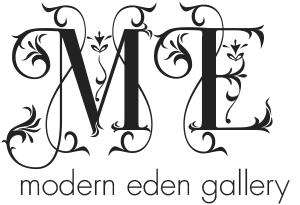Your Cart is Empty
Exhibitions
- Precious Metal: Group Exhibition
- Year of the Dragon: Group Exhibition
- Boreal: Group Exhibition
- Shannon Taylor: Small Magic
- Reverie: Group Exhibition
- Olga Esther: Silenced Women in the Middle Ages
- MASS: The Biggest Little Show
- Calvin Ma: Standstill
- Bacchus: Group Exhibition
- Primary Hughes: Re-Emergent

- Precious Metal: Group Exhibition
- Year of the Dragon: Group Exhibition
- Boreal: Group Exhibition
- Shannon Taylor: Small Magic
- Reverie: Group Exhibition
- Olga Esther: Silenced Women in the Middle Ages
- MASS: The Biggest Little Show
- Calvin Ma: Standstill
- Bacchus: Group Exhibition
- Primary Hughes: Re-Emergent
Artwork
About Us
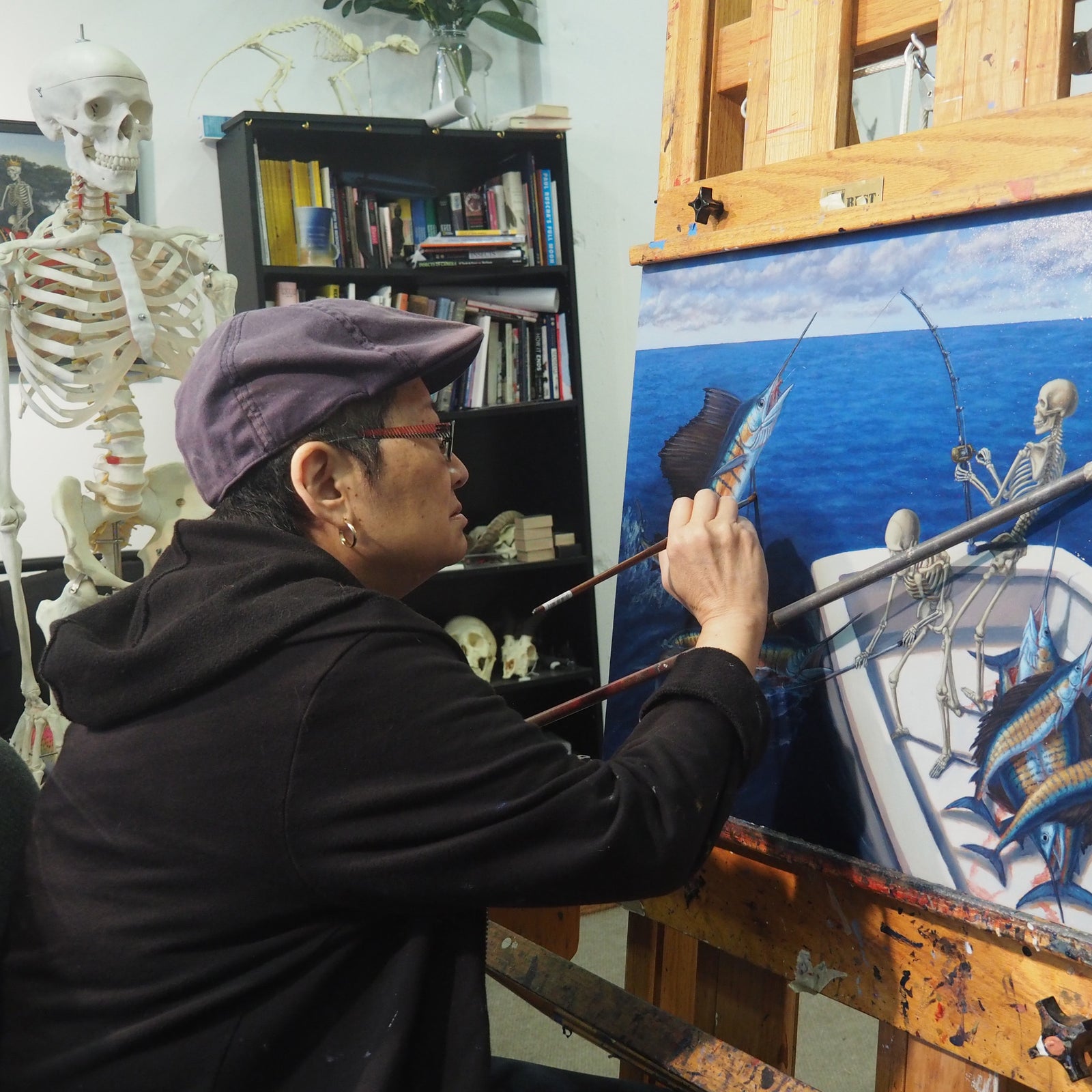
Artist Interview: Sandra Yagi
November 02, 2017 6 min read
Sandra Yagi is a surrealist painter working out of her San Francisco studio to create highly informed works inspired by the dramatic realities of ecological dynamics. Here, Sandra has had the graciousness to share very thought-provoking statistics about modern wildlife and the human influence along with a glimpse into how she translates those discoveries into works of art.
Interview by Jessica Violetta

JV: Hi Sandra, we are so glad to have you showing in the gallery for the upcoming show Hindsight. Can you talk a little bit about the work you are contributing?
SY: When Bradley contacted me about the exhibit, he mentioned that the work I had done with ecological themes would work well with his vision for "Hindsight". Over the last few years, I did several paintings that used the human skeleton as a symbol of humanity's destruction of the environment. My first piece along these lines was "Elegy" which I showed at Modern Eden in 2012. This painting depicted a skeleton beckoning some beautiful birds, passenger pigeons, hunted to extinction in the late 19th century. The pieces for Hindsight are a continuation of that theme. "The Last Harvest," the painting that I just finished, portrays skeletons pulling sailfish from a peaceful sea. It appears to be a wasteful slaughter, as the carcasses of previously caught fish lay in pools of blood on the deck, and there is no end to the harvest until the last fish is dead. A study by the World Wildlife Fund showed that vertebrate populations declined by over 50% between 1970 and 2010. This decline is mostly driven by monetary greed - poaching, hunting, and habitat loss for minerals, wood and palm oil.

JV: Wow, your work is so well informed by research.I know that you are generally very influenced by science, oddities, and nature. Is there something particularly relevant between your life experiences and interest in these subjects?
SY: I've always loved science, animals and nature. When I was a kid, my uncle taught me to appreciate wildlife and nature by giving me a number of animal books and a microscope. I was always collecting insects, especially butterflies. My younger brother and I would go to a nearby pond to catch minnows, crawdads and frogs, and bring them home to raise in an aquarium. I would look at pond water samples under the microscope to find protozoans, hydras and water fleas. To this day, I'm still intrigued with insects, animals of all kinds, bones, and microorganisms. I subscribe to science magazines, maintain a decent collection of books, and follow various amateur scientists on Instagram.

JV: Aside from reading and investigating these topics, do you have any other artists that you look to as inspiration?
SY: There are a number of artists that inspire me, so I will only mention the first ones that come to mind: Walton Ford and Martin Wittfooth both use animals as symbols for the affect humans have had on the planet, as well as metaphors for contemporary society. They are both incredibly talented and skilled artists who make works of beauty that also convey serious messages. I admire Laurie Lipton's skillful drawing, visionary imagination and ability to access dark recesses of the human psyche. I love the fearlessness of Masami Teraoka in taking on any subject even if taboo or sensitive. Among old masters, an artist that inspires me is Maria Sibyl Merian, a naturalist and artist who lived in the late 1600-early 1700s. She went to the jungles of Suriname to illustrate insect species at a time when women were not allowed to study science and pursue art. Not only did she illustrate animals and insects, she also scientifically described metamorphosis and life cycle of various species. My anatomical imagery is also inspired by Andreas Vesalius and Bernard Siegfried Albinus. Both artists did scientific illustration of human anatomy, but the illustrations were artfully done. Their illustrated figures were in beautiful landscapes and dynamically posed.
JV: It appears that you work in a very traditional way, drawing from life with pencil and painting in oils. Have you always worked this way and/or what is it about this process that you like most?
SY: Drawing is the foundation of my working process. I go to the SF Zoo and the California Academy of Science as often as my work schedule allows to sketch from live animals and specimens. This helps me understand how animals move and behave. Additionally, I go to life drawing sessions twice a week, drawing the nude human figure. This is a very traditional regimen, but I think it is necessary to continually practice my drawing skills.

JV: I commend you for your dedication to learning how to properly draw animals from life! But your paintings are also very surreal which means it cannot all be inspired only by what is seen in front of you. Can you talk a little about how you move from concept to a finished painting?
SY: A painting usually starts with a rather fuzzy spark of an idea. I then produce a rough sketch just to capture the feeling of the idea, and at this point I don't worry about technical accuracy. Once the idea starts to gel, I start working through problems such as composition, background and mood. This stage involves a great deal of research and photography. I look at images on the internet, go out and photograph possible backgrounds, and sometimes even purchase props, such as skull castings or insect specimens.
I often arrange and and photograph my human skeleton (casting), and use Poser, a software program, to understand the positioning of the skeleton. I usually work through several drawings before I arrive at a final version, rendered to show shadows and values. I then transfer the drawing to a panel using tracing paper and graphite transfer paper.
My favorite part of the process is when the second layer of paint goes onto the panel, and the concept becomes more tangible.

JV: The way you describe your process is very inspiring with all of the props and preparation you arrange. Is there anything you could give as advice, whether in tools to acquire or otherwise, for artists interested in painting similar kinds of imagery?
SY: I recommend taking time to observe nature, both in person, and through the work of others, such as wildlife photographers. When I'm relaxing and brainstorming for new ideas, I enjoy paging through all of my nature and art books. You can never have too many books! Preferably with lots of color photos.
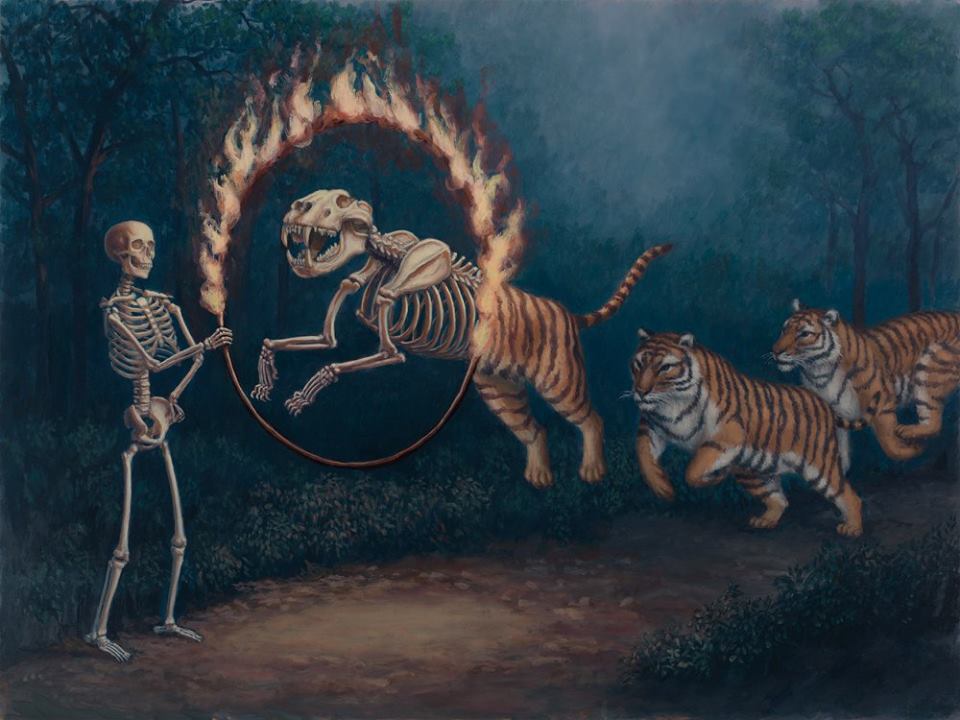
JV: You are also holding open studios this month which are right here in San Francisco. What it is like these days having a studio in this city?
SY: I'm very fortunate to have a studio at Pacific Felt Factory (PFF) , in San Francisco’s Mission District, an area where gentrification is quickly displacing arts’ spaces and local artists. PFF, which opened last year, has 14 affordable artist studios, and a community exhibition/meeting/event space. I have studio neighbors who are supportive of one another, and producing and showing great art. Several of my artist friends have moved away due to loss of living or studio spaces, to places like Los Angeles and Reno, and to me the city has lost some of its character with their transition. I hope that the City government will take more policy action to ensure that the art community can flourish (through zoning, affordable housing, and setting aside real estate for art studios). The staff of ArtSpan, which produces the Open Studios citywide event, has worked hard to help visual artists remain in the city - either directly, with art spaces such as the Journal Building Studio Residencies program at Van Ness and Market, or through their advocacy at City Hall. One way that I have tried to give back to the art community is by serving on the board as Treasurer for a women's non profit art organization, Northern California Women's Caucus for Art. We provide community, networking, art activities, and exhibition opportunities for women artists.
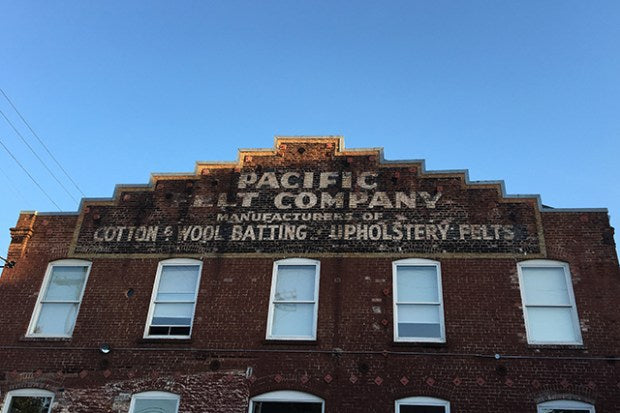
JV: As a female, I am so excited to hear you mention your involvement in this organization. Through that experience along with simply being a female artist in today's society, do you feel that women are continuing to receive more opportunities in the art world?
SY: I believe that the opportunities for women have vastly improved over the last few generations. The gallerists I have personally worked with have treated their male and female artists equally well, and provided equitable exhibition opportunities and levels of promotion. However,I believe that there are still inequities regarding treatment of female artists by high end galleries and museums. Statistics in thisarticle from ArtNews shows that in the 7 year period ending in 2014 male artists were the subject of the majority of solo exhibits at major art institutions - women garnered only around 20% of such exhibits.
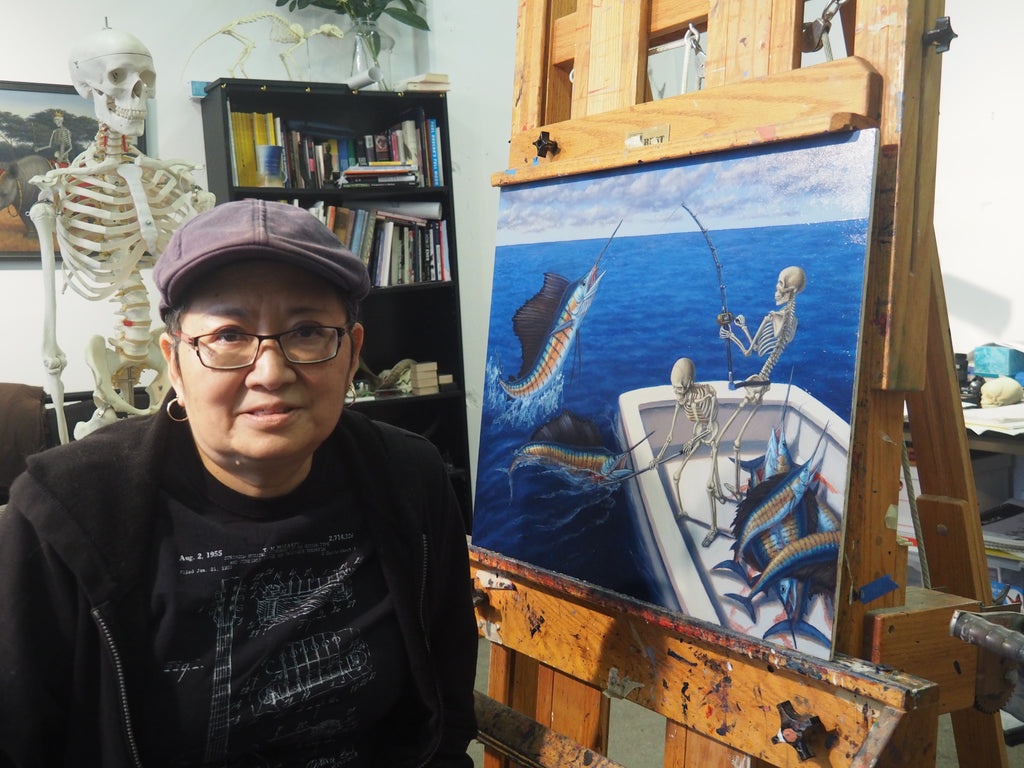
JV: Well that is quite an eye-opener, for sure. We have come so far yet still have such a long way to go. Thank you Sandra, so much, for your time. We are looking forward to celebrating with you at the opening this Saturday and may just pick your brain a bit more about these topics!
Sandra Yagi's new work will be on display as part of Hindsight from November 5th to December 3rd. Join us for the opening reception this Saturday from 6-9!
Leave a comment
Comments will be approved before showing up.
Also in Gallery Blog
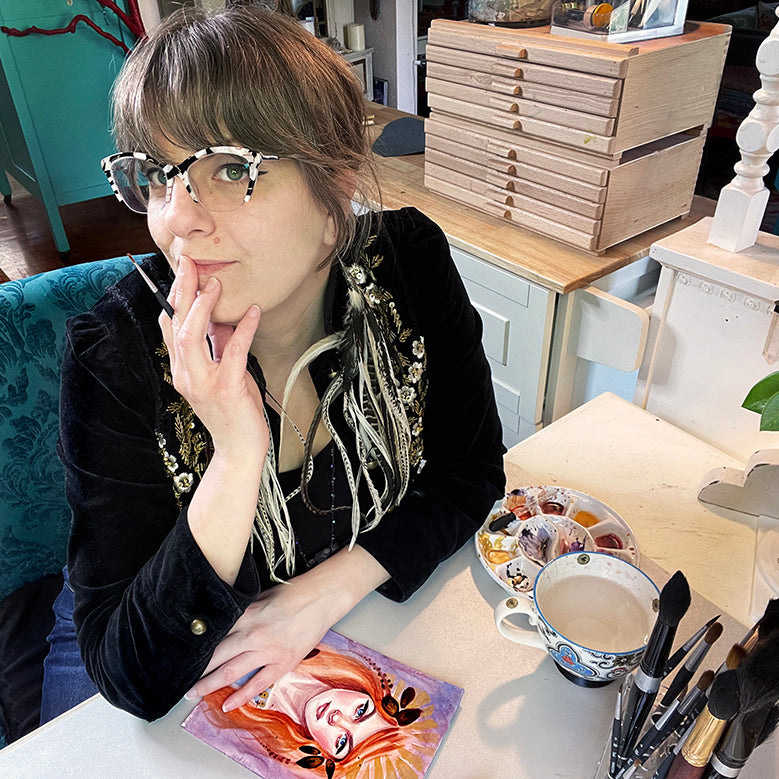
Artist Interview: Aunia Kahn
July 14, 2022 7 min read
Aunia Kahn is a multi-faceted creative entrepreneur and a globally awarded, collected, and exhibited figurative artist/photographer, published author, instructor, and inspirational speaker. We asked Aunia a few questions for her artist of the day feature at the gallery.
Read More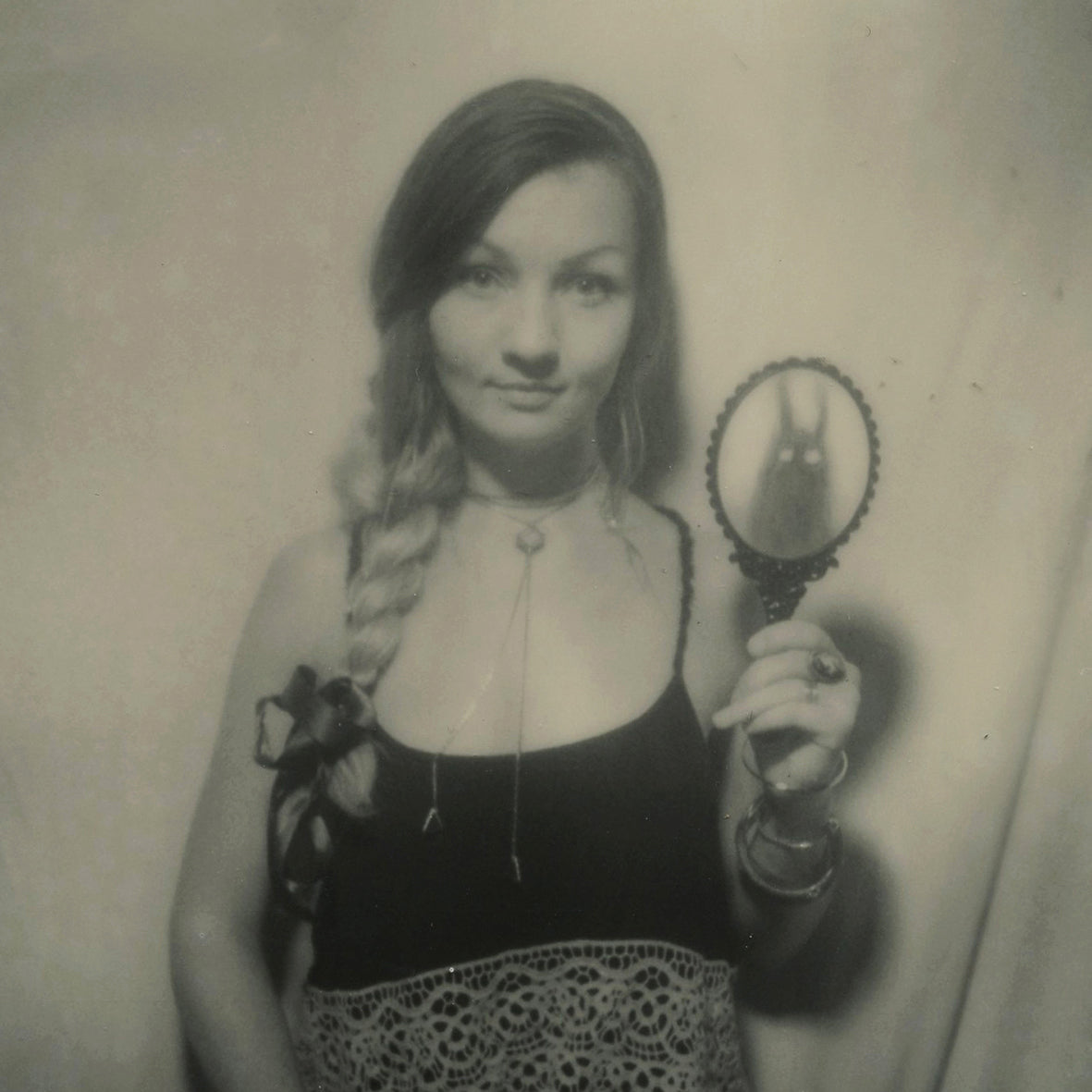
Artist Interview: Nadezda
July 01, 2022 7 min read
Since childhood my family inspired me to embark on various creative journeys such as music, poetry, and theater, which are hereditary to the creative approaches I use in my artwork today. From a young age I wrote and performed songs and poetry, as well as acted in a local theater with my whole family. When I came to the US to study art, I joined the school called Safehouse Atelier, which focused on traditional academic drawing and painting, as well as digital concept art.
Read More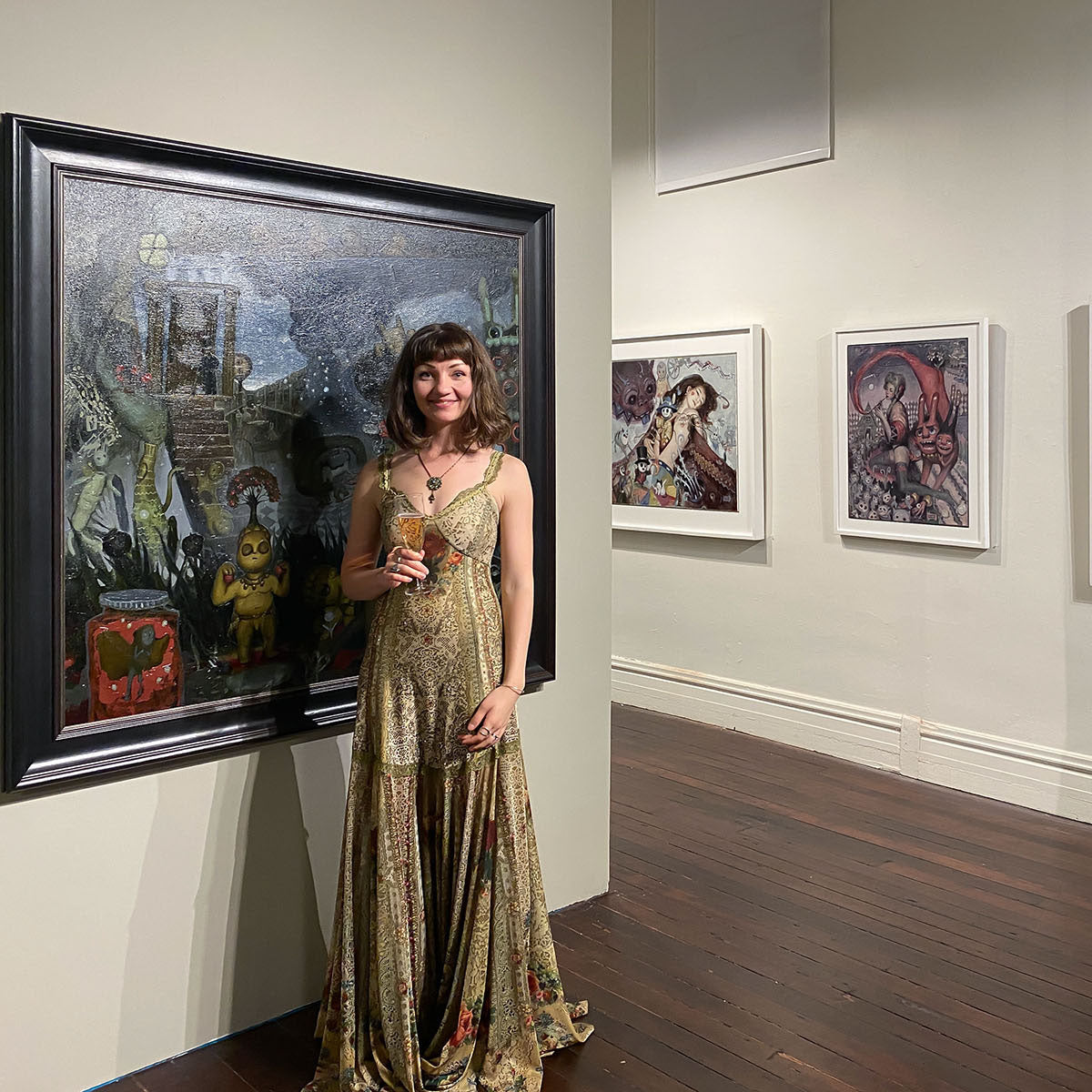
Nadezda's "Secret Hallway" Opening & Installation Photos
February 18, 2022 1 min read
On February 12, we opened Secret Hallway the highly anticipated solo exhibition from Oakland-based artist Nadezda. Focusing on narratives carefully gathered from the hidden chambers of her imagination and transformed into dreamscapes, her multifaceted artworks are the intimate windows into the inner world of her peculiar characters and creatures.
Read More